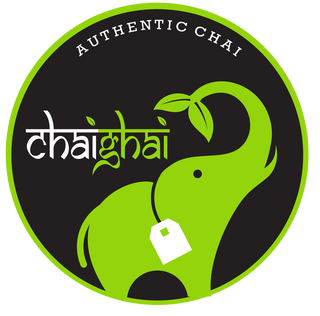“So long as lips shall kiss, and eyes shall see, so long lives this, and this gives life to thee.”
-Vatsyayana

A big misconception in western culture is that the Kama Sutra is solely a guide that explores and emphasizes sexual positions. In reality it is an ancient Indian spiritual text that dates back to the 3rd century. Beyond that it offers a manual for life and love by providing steps on how to live well, the nature of love, how to find a partner and what it takes to improve one’s love life. Taking its name from Kama, the Hindu God of desire and Sutra, meaning manual, it offers enlightening principles that guide you to the four goals of human life. The earliest European version by Richard Burton does not reflect this sentiment and was mistranslated to suit the needs of the era. What was once a guide to life became a guide to sex, muddying its initial intentions.

Instead of the consideration the western world has for it, the Kama Sutra in actuality elucidates principles that govern how to keep a relationship healthy. Its teachings suggest that self-growth can foster a stronger connection between partners. Little is known about its author Vatsyayana beyond that he wrote the Kama Sutra after much meditation, to outline the Purusharthas; the four main goals in life. These goals include Dharma, Artha, Kama, and Moksha; all of which are believed to be necessary to fulfilling a successful life. While Kama, representing the God of desire is widely known, the other three are not as much. The history of the Kama Sutra also offers a great deal of knowledge to be gained through its life lessons on health and well-being, both physically and spiritually that collectively attribute to more fulfillment in life.

1. Dharma
Dharma is the principle of Purusharthas that is most widely known about after Kama. It deals with behaviour and how life within the universe is governed. In Hinduism, Dharma includes both individual and religious duties and how morality affects the virtuous. In the Vedas, the oldest scriptures of Hinduism the idea of Rta, how order is regulated in the universe is mentioned heavily. Rta further deals with what we know as Karma and the notion of cause and effect that is prevalent in the idea of what goes around comes around. The vibrations we radiate have reactions with the rest of the universe, that can be seen as a cause and effect relationship. The returning vibration is believed to have been generated by the initial one. This closed loop of energy has a cyclical effect that Dharma suggests we reap what we sow. Dharma’s blueprint of the cosmic law and order produces a way of divine living. Cause and effect makes Dharma a critical element in living a fulfilled life.

2. Artha

Artha, the means of making a living, incorporates the notion of finding financial security and striving towards economic prosperity and how they are important aims in reaching a fulfilled life. By going out into the world to find success a person can not only work towards the betterment of society they can improve themselves at the same time. In the Kama Sutra, Artha includes tangible things that can be owned or acquired such as land or wealth. It also depicts how to work to not only obtain them but to further keep them growing prosperously. While these pursuits focus on the ways in which one becomes a financially contributing member of society, the theory goes beyond the material. Vatsyayana also makes sure to discuss activities people can participate in to live a more pleasurable life. He offers 64 arts that improve one’s skills in numerous areas, such as cooking, architecture and languages among many others. These activities coupled with the pursuit of a stable and fulfilling career are vital to the principles Artha outlines for the realization of happiness.

3. Moksha
Moksha denotes the significance in finding freedom through the liberation of self-knowledge and realization. Those who strive towards the virtues extended by Moksha do so in the pursuit of their true self. Another main concept that can be derived from Moksha is the idea that all things are connected within the cycle of life and that reaching a state of Braham, the highest universal reality is possible. The idea of attaining enlightenment both within relationships to others and with the universe itself is at the core of the concept of Moksha. Another important principle of Moksha is the liberation from Samsara, the cycle of death and rebirth. This release as attained through Moksha is only possible when one casts off their ignorance and the prolonged suffering, that humans are chained to. Only then can the soul be released, and the higher consciousness of the spirit be actualized.

Chai Ghai has mindfully designed our Kama Sutra chai to have added benefits to both sexual and physical health. The ingredients found in Kama Sutra differ from most main stream chais in India. Our use of jasmine, rose and lavender pedals emanate a floral flavour and research suggests increase the libido through the regulation of hormones in both men and women. The many other ingredients we have added such as cardamom, nutmeg and cinnamon arouse the pallet and have a host of health benefits that can be found on our website. Benefits – Chai Ghai Our Kama Sutra vibe takes inspiration from the teachings laid out in the Kama Sutra and aims to create an aura of good health with every sip.
“Knowing love, i can allow all things to come and go, to be as supple as the wind and to face all things with great courage, my heart is as open as the sky”
-Mira Nair

Long thought to be a book that merely extols the virtues of every sexual position in the known universe the Kama Sutra by Vatsyayana, is so much more, particularly in Indian culture. It is not only a work that details carnal pleasure, but also one that discusses the ways in which its reader can lead a happier life. The scholar Wendy Doniger has written extensively on the Kama Sutra; how its ideas were ahead of their time, and it was misrepresented in the original European translation by Richard Burton. The four concepts featured in the Kama Sutra Dharma, Artha, Kama and Moksha were highlighted in order teach how their philosophies come together in realizing the pursuit of a happy life. Purusharthas is a key element in Hinduism and the Kama Sutra combines the four ideas together to show the role they can play in striving towards a harmonious relationship between partners, along with the universe. Although misunderstood in western culture, in Indian culture the Kama Sutra is a manual for life and love, not just one about love making.




